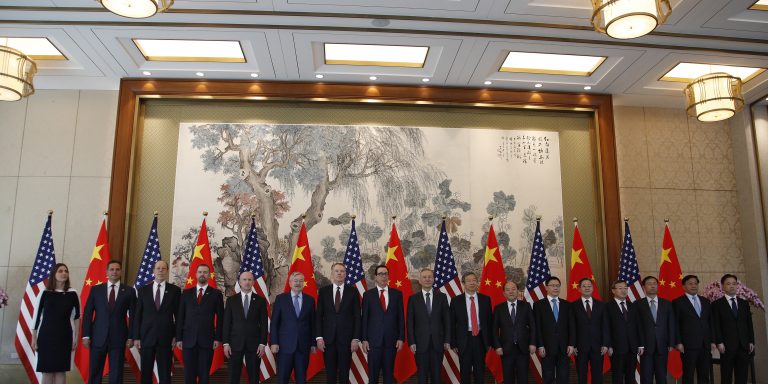INTELBRIEF
May 24, 2019
IntelBrief: The Zero-Sum Mentality of U.S.-China Trade Negotiations

- On May 10, 2019, U.S. President Donald Trump announced a raise in tariffs on Chinese imports from 10 to 25%, further escalating the ongoing trade dispute with Beijing.
- The hike in tariffs came as a surprise as both the U.S. and China had been raising expectations in early May that a deal was imminent.
- The ongoing trade dispute between the U.S. and China has negative effects on both nations’ economies; a prolonged and escalated trade dispute could push the global economy into a recession.
- Serious misjudgments on both sides have created a zero-sum mentality and a stalemate, with no clear path forward.
.
On May 10, 2019 as Chinese Vice-Premier, Liu He, landed in Washington to continue trade negotiations, president Donald Trump announced the U.S. would be raising tariffs on $200 billion worth of Chinese imports, an increase in tariff rates from 10 to 25%. Trump stated that the increase in tariffs was in response to China ‘backtracking’ on a previously negotiated deal. Beijing responded by announcing an increase in tariffs on $60 billion of U.S. products, which will come into effect on June 1, 2019. In return, the Trump administration is considering raising tariffs on nearly all remaining Chinese imports if no deal is reached.
Ahead of Liu’s visit to Washington, expectations were high that the ‘Trade War’ between the U.S. and China, which officially began on July 6, 2018, was drawing to a close. Both sides had expressed hopes that a deal would be reached, but after China allegedly reneged on parts of the deal that Liu called ‘principal issues,’ the situation escalated. These ‘principal issues’ include U.S. demands that China reforms its laws to prevent unfair trade practices, specifically in the realm of intellectual property theft and industrial espionage. Washington has also demanded that China increase the import of specific U.S. products, which Beijing has deemed ‘unreasonable,’ especially given recent U.S. moves to blacklist certain Chinese technology—principally linked to the Huawei 5G security concerns. Several European firms have followed the Trump administration’s lead. If the U.S. moves to scrutinize Chinese companies and government officials linked to Beijing’s repressive policies in Xinjiang, other tech firms could be sanctioned.
A prolonged trade dispute can cause serious damage not only to both economies but also to the global market. According to the International Monetary Fund (IMF), if tariffs are placed on all Chinese goods, as the Trump administration is threatening to do, U.S. gross domestic product (GDP) would decrease by approximately 0.9%. These numbers are worse for China, with the IMF predicting a 1.6% cut in its GDP. According to the Organization for Economic Co-operation and Development (OECD), if tariffs are further increased, global GDP would see a 0.7% decrease, amounting to almost $600 billion, by 2022. Experts are concerned that a prolonged and escalated trade dispute could push the global economy into a recession.
The U.S. and China have announced that talks are not suspended, and will possibly continue in Beijing in June. For China and the leaders of the Chinese Communist Party, especially President Xi Jinping, it is important to not be viewed as conceding his position or letting the U.S. dictate the terms of the agreement. To Washington and the Trump administration, nothing but the original deal is acceptable. Serious misjudgments on both sides have led to a zero-sum mentality. It is unlikely that either leader will make the compromises that appear to be needed to reach an agreement, enforcing the notion that there is no end in sight to the U.S.-China trade dispute.
.
For tailored research and analysis, please contact: info@thesoufancenter.org
[video width="960" height="540" mp4="https://thesoufancenter.org/wp-content/uploads/2019/05/IB-0524-1.mp4" poster="https://thesoufancenter.org/wp-content/uploads/2019/05/AP_19126308906256.jpg"][/video]